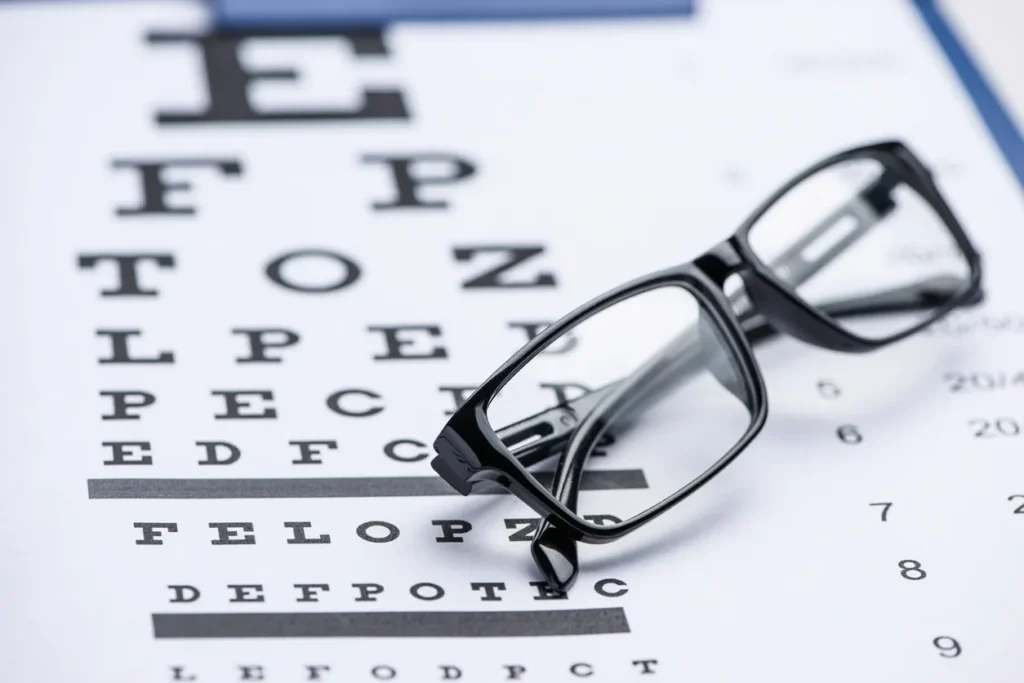Driving is a big part of daily life for many people. It gets you to work, school, or the store. But safe driving needs good health. A health check for drivers helps make sure you can handle the road. This includes a vision test and a medical certificate in some cases.
Why does this matter? Poor health can lead to accidents. For example, bad vision plays a role in many crashes. Studies show that drivers with poor central visual acuity are 46% more likely to have a road traffic crash than those with normal vision. In the UK, six people died last year from accidents caused by drivers with uncorrected or defective eyesight. Brake, a road safety group, estimates 2,900 casualties a year from poor driver eyesight.
This blog post covers all you need about health check for drivers: vision test & medical certificate. We look at why it’s key, what it involves, rules in different places, and tips to pass. We aim to give clear info to help you stay safe and legal. Let’s start with the basics.
What Is a Health Check for Drivers?
A health check for drivers is a review of your physical state to confirm you can drive safely. It often includes a vision test and, for some drivers, a full medical exam leading to a certificate.
Health check for drivers aim to cut risks on the road. Governments set rules to protect everyone. For regular drivers, it might just be a quick eye check at license renewal. For truck or bus drivers, it’s more detailed.
In the US, the Department of Transportation (DOT) handles rules for commercial drivers. They need a DOT physical every two years. This includes vision, hearing, blood pressure, and more.
In the UK, the DVLA sets standards. Doctors help assess if a condition affects driving. Vision is a big part, with rules on acuity and field of view.
Other countries have similar systems. In Europe, EU rules guide most nations. They require at least 20/40 vision in the better eye.
Health checks save lives. The World Health Organization says 1.19 million people die each year in road crashes. Many involve health factors like poor vision or other issues.
For you, passing a health check means peace of mind. It shows you’re fit to drive. Next, we focus on the vision test part.
Vision Test for Drivers: Why It Matters
Vision is crucial for driving. You need to see signs, other cars, and hazards. A vision test checks if your eyes meet the standards.
Good vision helps spot problems early. It lets you judge distances and react fast. Without it, risks go up. Research links vision issues to crashes. Drivers with severe visual field loss are twice as likely to cause an accident.
In one study, 96.3% of drivers in accidents had normal visual acuity, but 17% had field issues, and 15.8% had poor 3D vision.
Eye tests catch conditions like cataracts or glaucoma early. Regular checks keep you safe.
Most places test vision when you get or renew a license. In the US, states vary, but often it’s 20/40 acuity with or without glasses. Field of vision should be at least 140 degrees.
In Kentucky, starting 2025, all renewing drivers need a vision screening. You can get it free at the state office or from an eye doctor.
The test uses a Snellen chart. You read letters from 20 feet. It measures acuity.
Color vision and depth perception might be checked too, especially for commercial drivers.
If you fail, you might need glasses or contacts. Or see a specialist. In some cases, you get a restricted license, like daytime only.
Vision tests are simple but vital. They ensure you see the road clearly.
How to Prepare for Your Vision Test
Prep makes the test easier. Start with a full eye exam from an optometrist. They check for issues and prescribe corrections if needed.
Wear your glasses or contacts to the test. Clean them well.
Rest your eyes before the test. Avoid screens for a bit. Get good sleep.
Eat foods good for eyes, like carrots or leafy greens. They support eye health over time.
Practice with a home eye chart. Print one and test from 20 feet. It builds confidence.
Stay calm. Breathe deeply. Nerves can affect focus.
If you have dry eyes, use drops. But check if they’re okay for driving.
For DOT tests, know the rules: 20/40 in each eye, 70 degrees field per eye.
Prep helps you pass and drive safely.
Common Vision Problems for Drivers
Many drivers face vision issues. Near or farsightedness is common. Glasses fix it.
Glaucoma narrows your field of view. It can sneak up without symptoms.
Cataracts cloud the lens. They make lights glare at night.
Macular degeneration affects central vision. It makes reading signs hard.
Diabetes can damage eyes, leading to retinopathy.
Aging worsens these. Over 40, presbyopia makes close focus tough.
If you notice blurry vision or halos, see a doctor fast.
Corrective lenses help most. Surgery fixes some, like cataracts.
Know your eyes. Regular tests prevent problems.
Medical Certificate: What It Is and Who Needs It
A medical certificate proves you’re fit to drive, especially for commercial work.
In the US, DOT requires it for CDL holders. You get it after a physical exam.
The exam covers vision, hearing, blood pressure, and urine tests.
You need the certificate every two years, or less if you have conditions.
Forms include MCSA-5875 for the report and MCSA-5876 for the certificate.
For vision, if you don’t meet standards, you fill MCSA-5871 with an eye doctor.
Starting June 2025, exam results go straight to state agencies.
In the UK, group 2 licenses (trucks, buses) need stricter medicals.
The certificate shows you’re healthy enough for long drives.
Without it, you can’t drive commercially. Fines or job loss could follow.
Steps to Get a Medical Certificate
Find a certified examiner. Use the FMCSA registry.
Bring your license, medical history, and any forms.
The exam takes about 30 minutes. It includes:
- Vision test
- Hearing check
- Blood pressure measure
- Urine sample for sugar/protein
- Physical check for strength, reflexes
If you pass, you get the certificate on the spot.
Cost is around $50-150, depending on location.
Renew on time. Set reminders.
If you have diabetes or high blood pressure, bring records. Insulin users have extra rules.
The process keeps unfit drivers off roads.
Vision Standards in Different Countries
Health check for drivers vision rules vary by country. Know them if you drive abroad.
In the US, most states require 20/40 acuity. Field at least 140 degrees.
Canada follows similar, but provinces set details.
UK: 20/40 in better eye, 120 degrees field.
EU countries use 20/40 standard.
Australia: 20/40, with color vision for commercial.
India: Varies by state, but generally 20/40.
Italy and Turkey have stricter 20/20.
Most test acuity and field. Some check color and night vision.
If traveling, check local rules. Carry glasses if needed.
Differences show how countries balance safety and access.
Common Health Issues That Affect Drivers
Health problems can make driving risky. Know the signs.
Substance abuse impairs judgment.
Medications cause drowsiness.
Mental health like anxiety affects focus.
Vision impairment, as we covered.
Dementia hurts memory and reaction.
Arthritis limits movement.
Heart disease can cause sudden issues.
For truck drivers, obesity is common. So is sleep apnea. It leads to fatigue.
Diabetes affects vision and energy.
High blood pressure raises stroke risk.
Truckers have higher rates of heart disease and diabetes than average workers.
Manage with doctor visits and lifestyle changes.
Report serious issues to licensing agency. It’s the law in many places.
Staying healthy keeps you driving longer.
Renewing Your Driver License: Medical Requirements
Renewal often includes health checks.
In California, for CDL, submit medical every two years.
Seniors might need more frequent tests. In Maryland, over 40 need vision every renewal.
Bring proof of vision if required.
For medical conditions, fill forms like DL 62 if referred.
In New York, keep USDOT certificate on file.
Online renewal might skip in-person tests, but not always.
If you have a condition, doctor reports it.
Prepare docs: ID, address proof, medical forms.
Renew early to avoid gaps.
Rules change, like Kentucky’s new vision rule.
Check your state’s site for updates.
Tips for Maintaining Good Health as a Driver
Health check for drivers.
Get annual eye exams.
Exercise regularly. Walk or stretch.
Eat balanced meals. Avoid junk on the road.
Sleep well. Aim for 7-8 hours.
Manage stress with breaks.
For long-haul, watch posture to avoid back pain.
Quit smoking. It hurts lungs and heart.
Monitor blood pressure.
Use apps to track health.
Join driver wellness programs if available.
Small changes make big differences.
Fresh Insights: Beyond the Basics
Most guides list rules. But think about daily impact.
For example, night driving tests vision more. If you struggle, limit evening trips.
Tech helps: Apps remind you of exams.
Community stories on forums share real tips. Like eating blueberries for eye health.
Compare countries: Stricter rules in Europe might mean fewer accidents, but data varies.
Personal story: A friend failed a test due to dry eyes. Drops fixed it.
For more information visit Traffic signs test.
Conclusion
Health check for drivers: vision test & medical certificate is key for safety. It catches issues early and keeps roads secure.
We covered what it is, prep tips, rules, issues, and more. Use this to stay informed.
Drive safe. Get checked regularly. Your health matters.


